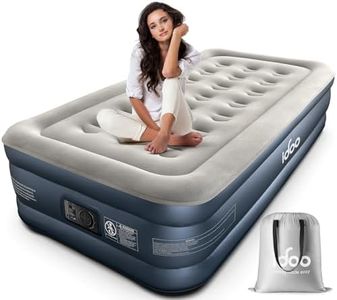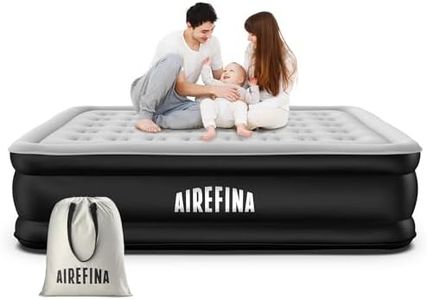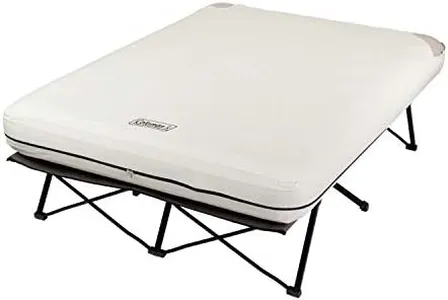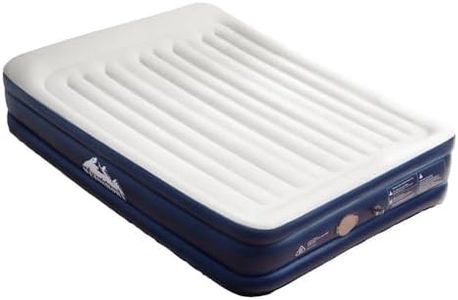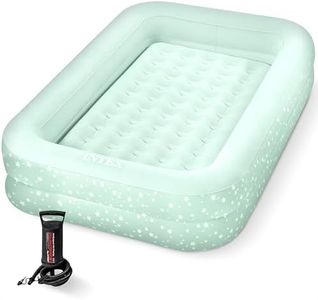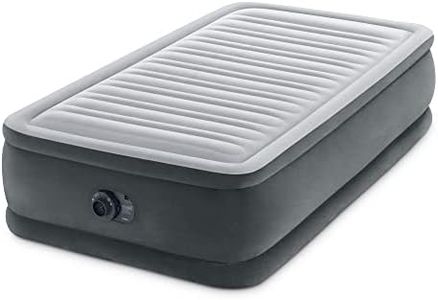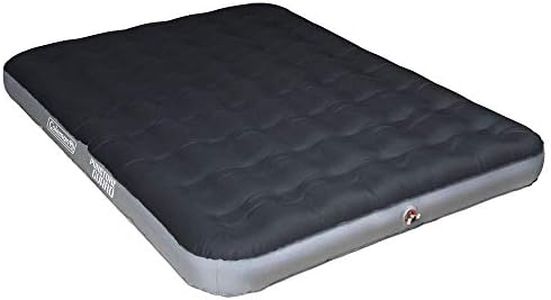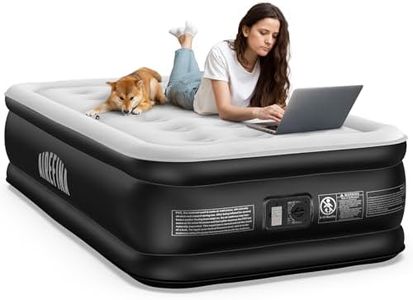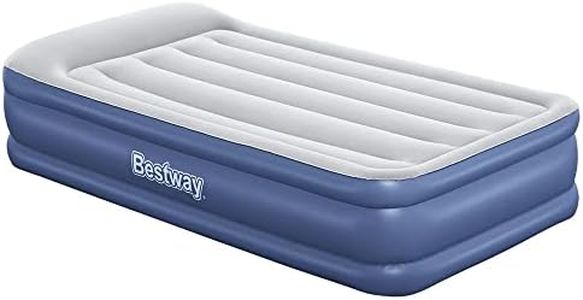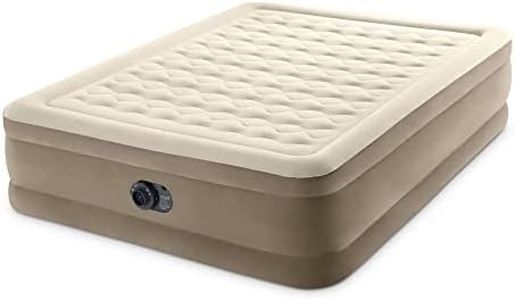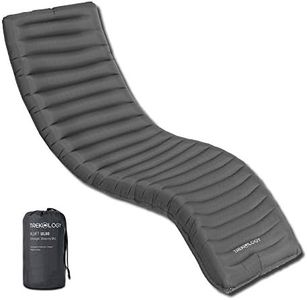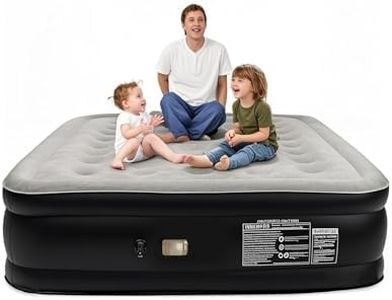We Use CookiesWe use cookies to enhance the security, performance,
functionality and for analytical and promotional activities. By continuing to browse this site you
are agreeing to our privacy policy
10 Best Inflatable Beds
From leading brands and best sellers available on the web.Buying Guide for the Best Inflatable Beds
Choosing the right inflatable bed is all about understanding your needs—such as who will use it, how often, and in what setting. Inflatable beds can be used for guests, camping, or even as a semi-permanent sleeping solution. Pay attention to comfort, durability, and practical features that will make inflating, deflating, and storing the bed as hassle-free as possible.SizeSize refers to the dimensions of the inflatable bed, such as Twin, Full, Queen, or King. The size you choose should match both the sleeping space available and the number of people using it. If you’re using the bed for single guests or in smaller rooms, a Twin or Full size may be adequate. For couples or more comfort, go for a Queen or King. Consider where you’ll place the bed and how much space you need to move around it before deciding.
HeightThe height of an inflatable bed is how far off the ground the sleeping surface is. Low-profile models are about 5-10 inches high, while raised or double-height beds can be up to 24 inches or more. Lower beds are easier to pack and carry, which is great for camping, but might be harder to get in and out of. Raised beds are more comfortable for regular use or older guests, as they are closer to the height of a traditional bed.
Pump TypePump type refers to how the mattress inflates—manually, with a foot or hand pump, or automatically, using built-in electric or battery-powered pumps. Built-in electric pumps are the easiest to use for home settings because they inflate and deflate the bed quickly with little effort. Manual pumps are lightweight and ideal for outdoor or camping use where electricity isn’t available. Choose the pump type based on where and how often you’ll use the bed.
Material and DurabilityMaterial and durability relate to what the inflatable bed is made of—most commonly PVC or reinforced vinyl. Thicker materials are more robust and less likely to puncture, making them better for frequent use or heavier sleepers. Some models have flocked tops for extra comfort and to stop sheets from slipping. Delicate or thinner models may be fine for occasional guests but won’t hold up as well over time.
Weight CapacityWeight capacity is the maximum weight the bed can safely support. Lighter-duty beds are designed for single users, while heavy-duty ones can support two adults with a combined higher weight. Always check the weight limit to ensure long-lasting performance and to prevent damage or uncomfortable sagging, especially if multiple people will be using the bed.
Portability and StoragePortability and storage deal with how easy the bed is to transport and pack away. Some inflatable beds come with their own carrying case or roll up into a small bundle, while larger beds may take up more space even when deflated. If you need to move or store the bed often, pick a lightweight, easy-to-pack option.
Comfort FeaturesComfort features include things like internal air coils, flocked tops, or extra support beams for a more bed-like feel. Air coils and beams help keep the surface more stable and comfortable, preventing the rolling or dipping that can happen with simpler designs. Prioritize comfort features if the bed will be used regularly or for extended stays.

